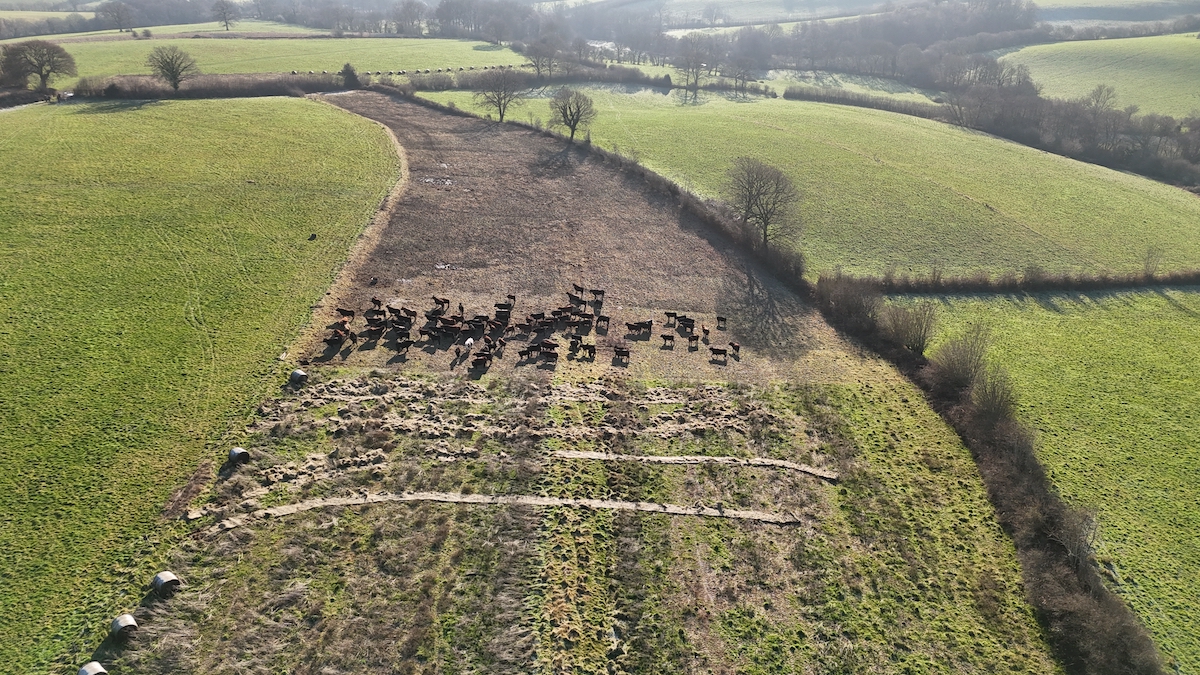We recently caught up with Organic Beef Farmers Sam and Becky Newington at Burgham farm in Etchingham, East Sussex to shoot a short film to help promote the Farming in Protected Landscapes (FiPL) programme, which is being delivered locally by the High Weald National Landscape team. With funding still available for farmers and land managers in the High Weald, I was keen to learn more about how the grants have benefited Sam and Becky’s family farm.
Descending down a small country lane we arrive at Burgham Farm in the Limden Valley, near Etchingham, East Sussex. After parking up in the farmyard, we make our way to the old farmhouse. Becky and Sam greet us at the back door and invite us in for a quick cuppa and a catch up.
Improving their mob grazing infrastructure with FiPL grant funding
It’s been about five years since I first met Sam and Becky, who at the time were buying in Organic store cattle and finishing them on their mob grazing system. They have since improved their mob grazing infrastructure with the help of a Farming in Protected Landscapes grant, installing lead out wire to join existing electric fences, creating a permanent hot line right around the farm. It also paid for the purchase and installation of mole ploughed water pipes.
“The funding has made moving the cows easier and created a more time efficient system” said Sam.
As a direct result, they’ve seen improvements to their soil health, with less poaching and compaction. In cold winter temperatures the mole ploughed pipes are also less likely to freeze, saving Sam and Becky a lot of time and hassle.
We headed out to see the main mob of cows and followers being out wintered. It’s a crisp sunny day and walking across their permanent pastures – I can’t help but be impressed at how well the ground is holding up after the amount of rain we’ve had.
Arriving in the field with their mob of cattle, the cows and calves were busy grazing the tussocky grass and looked happy and content. I also noticed an abundance of birdlife, attracted by the insects and habitat the cows provide. To supplement the cows feed, Sam and Becky roll out hay bales – a process called bale grazing.
Sam added that out wintering their animals helps increase the biodiversity of the farm and also keeps their costs down too.

Improving their existing hedgerows by hedge laying and dead hedge creation with FiPL grant funding
Sam and Becky received a second grant from Farming in Protected Landscapes to improve some of their existing hedgerows, via a combination of hedge laying and dead hedge creation. They were able to work with a local contractor who also undertakes bird surveys for them and has an active interest in the role of hedges in supporting wildlife.
The first step was to thin the hedges, and process this coppice material to be used later. Then the hedge was laid, leaving selected standards at intervals for shade and added diversity. Finally the outer line of the hedge was staked and a dead hedge woven using coppiced material. This combination helps create a stock proof fence with significant benefits to wildlife, due to the abundance of habitat created for invertebrates and small mammals and birds.
All thinnings from the hedge were woven into it, meaning there was no burning or waste. Overall they have renovated 480m of hedge. As well as the cost savings for not having to re-fence these hedgerows and stock proof benefit, they have also noticed the cows browsing the mixed hedging, helping improve the variety of their diet and overall health.
Farming in Protected Landscapes Application process
Sam and Becky found the process of applying for their FiPL grants really straightforward and received help and advice from the High Weald National Landscape team when developing and submitting their funding applications.
Next steps
If you would like to do a project like this on your land, funding from Farming in Protected Landscapes programme is still available until 2025 – visit highweald.org/fipl to learn more and fill out the quick online enquiry form. A member of the High Weald National Landscape team will then get in touch for an informal chat, and can even come out for a site visit if required. You will be supported through developing your project and submitting your application
More Information
Looking for more inspiration for your land? Checkout some of the other farmers we visited in our Meet the High Weald Farmer series, who have all benefited from the Farming in Protected Landscapes grant scheme. You can see the video we made below along with links to the other three farms we visited.






